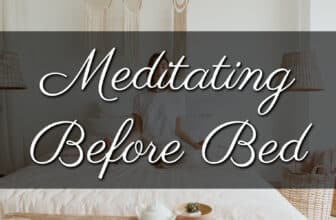Most folks have a perpetual sleeping position every night, basically because it is the most comfortable for them. Depending on your health and lifestyle, a certain sleeping position may be best for you than another. A lot of people benefit the most from sleeping on their backs. Today, we will give you some information on how to sleep on your back properly.
How and Why Can Back Sleeping Be the Best Option for Most People?
There are several reasons why you may want to consider sleeping on your back in the future. Here are the most common and beneficial reasons why people switch to back sleeping, even when it is not always easy.
No more acid reflux
Sleeping on your back can alleviate acid reflux that is exacerbated in other sleeping positions. For people suffering from this, you should wait for a minimum of two hours after a meal before lying down. When you do lie down, try sleeping on your back. It will help to maintain your body’s natural alignment and reduce acid reflux. If it does not lessen the discomfort, it’s always best to seek medical advice.
No more back pain
Back sleeping will also eliminate lower back pain and any kinks in your neck when done properly. Assuming you have a suitable bed, lying on your back will help to distribute the weight of your head and body evenly. It ensures the least amount of strain on your neck and spine. It allows you to rest deeper while protecting your back simultaneously – reducing the possibility of lower back pain. Maintaining the health of your spine will be highly beneficial as you age because it enables all of your bodily movement. To aid you to sleep without lower back pain, you can read this article on how to make a soft mattress firmer.
No more wrinkles
Many dermatologists and aestheticians claim they can tell which side people prefer to sleep on based on their wrinkles. Surprisingly, they are extremely accurate at guessing. If you do not usually sleep on your back, give it a try and look at it in the mirror. Chances are you will be able to tell the difference between the two sides of your face. That is assuming, you are old enough to have wrinkles.
By choosing to sleep on your back, your head, face, and chest will remain in a resting position without being scrunched up. Experts suggest that resting in this new position helps prevent the acceleration of the natural aging process from wrinkles. You can’t stop time entirely, but being a back sleeper may help you slow down signs of aging.
Defy gravity
There are lots of varying information on this topic, but many believe sleeping on your back will best hinder signs of aging in women’s breasts. They speculate that sleeping on your back will help keep breast perkiness for longer than if you want to sleep in another position.
Learning how to sleep on your back

Learning how to sleep on your back is not always easy, especially if you are used to side or stomach sleeping. However, the habit can be learned in the privacy of your own home, if you put some effort into it. At first, you may feel restless and wake up during the night. But do not get discouraged. The good health benefits can be more than worth it in the long run.
There are varying reasons for laying on your side. But for the most part, it all boils down to comfort. When learning how to sleep on your side, it is best to understand why you personally prefer one position over another.
Are you soothed by the pillow?
One reason you may prefer to sleep on your side or stomach, compared to sleeping on your back, is because the sensation of the pillow on your face is comforting. Just like a baby being coddled, it could make you feel safe and secure. If this is the case, it may be best to try and imitate this feeling while trying to change your sleep position. For some, this could simply mean placing your hand on your cheek or head.
Another option would be to make a large, soft pillow incline. The material will surround your head as it sinks, which would recreate the desired sensation. One final option, which has been very effective for some, is to use a second, smaller pillow. And then, place it against one side of your head. It will provide you with the illusion of lying on your side or stomach sleeping. It will allow some additional comfort while you are trying to switch to sleeping on your back. By doing these tips, you may find sleeping on your back the best position yet.
Do you have back pain?
Another reason you may prefer a stomach or side sleeping position is that lying flat on your back all night could be uncomfortable. And, it may even cause back pain. Often, this is caused by having tight hamstrings and hip flexors. When these muscles are tight, it can pull your spine out of alignment if you try to lie flat on your back for too long. One of the main reasons people experience this is from sitting at a desk all day.
Don’t be discouraged though, the best remedy for this is stretching! And while you’re at it, give your arms and legs a little stretch too. It may take a few days to start reaping the health benefits. But, adding a few stretches to your bedtime routine will loosen your hamstrings and hip flexors. This routine should alleviate any back pain you may have been experiencing from sleeping on your back.
Another easy option you can use involves rolling up a towel and placing it under your knees when you fall asleep. A pillow under your knees can also work. It will aid in realigning your spine and alleviate the pressure from lying flat if you have tight muscles.
What if you can’t stop rolling over?

What if you just can’t seem to stay on your back once you fall asleep? What if an extra pillow and stretching help, but you still find yourself waking up on your stomach or side? Here are a few options for you to explore that will aid you to sleep on your back all night:
A pillow wall
The first thing you need to try is to build a wall out of pillows on your left and right side before falling asleep. Depending on how light a sleeper you are, this may or may not work for you. Often people find this is not enough to deter them from rolling over. They simply disperse the pillow wall in their sleep. But, it is definitely worth a try.
A pillow incline
The next option for you to explore is building a slight incline out of pillows. It allows you to rest your head and upper body in an elevated position once you fall asleep. For some, being propped up helps prevent them from rolling over. If this does not work for you or you find yourself to be uncomfortable in this position, you need to use the other options listed.
A tennis ball
Another quick remedy requires only a tennis ball. In the privacy of your home, after you lie down, place a tennis ball next to either side of your body. Or you can place it only on your preferred side to roll over. You can also try sewing it in place into the lining of a shirt you will wear to bed. Ideally, if you try to sleep in another position, it will be uncomfortable and will cause you to roll back onto your back. A tennis ball works great because it is firm and large enough that you will not be able to sleep feeling it. At the same time, it is soft enough that you will not hurt yourself and you probably will not be woken up by it either.
A U-shaped pillow
The U-shaped pillow is available for purchase and can stop you from rolling over during the night. It is similar to a pregnancy pillow with a natural curve designed to help women sleep comfortably in their third trimester. This pillow can best provide support all over your body for those who are not seeing results from the other methods listed.
A towel
The option to alleviate lower back pain mentioned earlier may also prove to be helpful in this situation. It involves placing a rolled up towel or pillow under your knees. Also, feel free to use more than one of these options concurrently.
Other sleeping positions: Pros & Cons
Sleep in a fetal position on your side
The most common and preferred position for people to sleep in is the fetal position. Interestingly, studies show women are twice as likely to want to use this position than men. This position can best alleviate neck and lower back pain as you sleep in the privacy of your home. It is because it allows your spine to rest while maintaining its natural alignment. It is also the best way for a pregnant woman to sleep due to comfort. Also, sleeping on your back while pregnant could cut off the blood flow to the baby.
Information on recent studies conducted with animals suggests laying on your side may also be good at reducing the risk of Parkinson’s disease or Alzheimer’s disease. They said it is because your brain can clear waste easier while laying on your side.
If stretched out, laying on your side can also be good at reducing sleep apnea. However, if you curl into a ball instead of stretching out while lying on your side, it is possible to limit your lung and diaphragm functions. This position, in turn, will impede easy breathing.
A downfall to sleeping in this position can vary based on the type of mattress you have. If you have a firm one, this position can cause unnecessary pressure on your body like the hips and shoulders. It may lead to soreness and pain that can last throughout the day.
This position can also cause acid reflux for some, especially if you lie down immediately after a meal. Sleeping on your right side, specifically, can aggravate heartburn. Find out when it is best to doze off after a meal here.
Sleep on your stomach
While it may seem very comfortable at first, this position can cause lower back and neck pain if maintained for an extended period of time. It can also lead to headaches and eventual back and neck problems leading to arthritis. Sleeping on your stomach often causes you to toss and turn in an attempt to get better sleep. If you still prefer to sleep in this position, try using a soft, thin pillow that will not put your neck in an awkward or uncomfortable angle.
Conclusion
In conclusion, it is not always easy to change your sleeping habits and be a back sleeper overnight. In fact, you may have to actually train yourself to do so, which takes time and effort. Don’t be discouraged if your attempts do not always give you instant satisfaction. Most likely they will not.
In the privacy of your own home, keep trying different options until you find the combination that is right for you. There is not only one easy solution. But instead, there are many you want to use. It is up to you to determine what works, and what does not. Don’t forget; it’s all about your comfort!
Because your comfort is our priority, you might also want to see some information on how to choose the right mattress.






